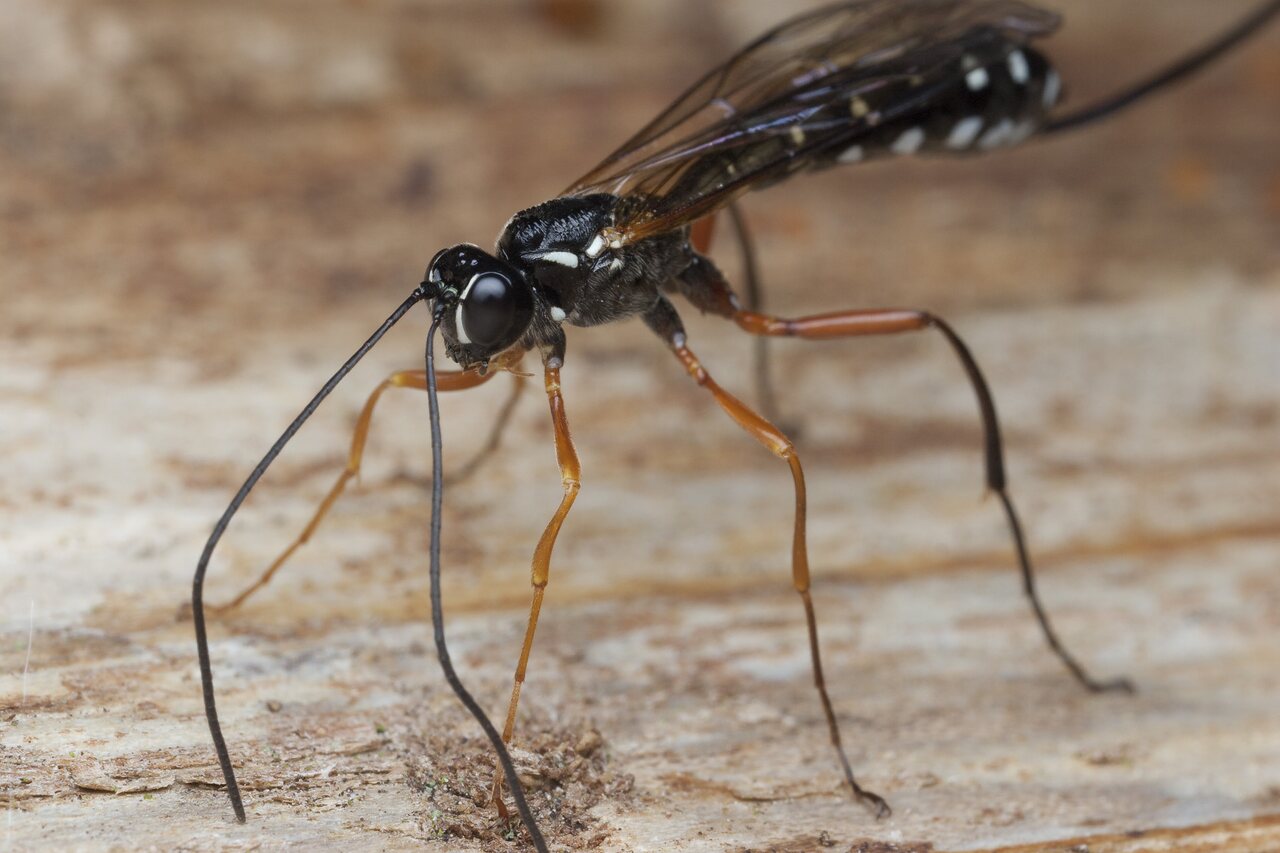
Rhyssa persuasoria female · vytis ♀
Egg laying, ovipositor in wood. Vilnius, Girulių miškas, senas pušies rastas.
- Giant ichneumon, Sabre wasp
- Holzwespen-Schlupfwespe, Riesenholzwespen-Schlupfwespe
- Sabelhveps
- Houtsluipwesp
- zgłębiec trzpiennikowaty, zgłębiec trzpiennikowiec
- en.wikipedia.org/wiki/Rhyssa_persuasoria
- naturespot.org.uk/species/sabre-wasp
- gbif.org/species/1280307
This species is present in most of Europe, in the Australasian realm, in the Near East, in the Nearctic realm, in North Africa, and in the Indomalayan realm. These wasps normally occur in coniferous or mixed woodland. Rhyssa persuasoria is one of the largest ichneumon wasps in Europe. The length of adults varies from about 10–20 mm in males up to 20–40 mm in the females, plus about 20–40 mm of the ovipositor. These ichneumon wasps have a thin black body, several whitish spots on the head, thorax, and abdomen and reddish legs. The antennae are long and thin.
Female of this parasitic species drills deep into wood by its hair thin ovipositor and lays its eggs on larvae living deep in timber (up to 40 mm), which become a food supply and an incubator for the progeny, until it is fully grown. This species has one generation a year (univoltine). Larvae overwinter in the wood, pupating the next spring and emerging from the wood as adults. Main hosts of Rhyssa persuasoria are the larvae of horntails or wood wasps (Urocerus gigas), as well as larvae of longhorn beetles (Spondylis buprestoides, Monochamus sutor) and great capricorn beetle (Cerambyx cerdo).
‥
0 comments
Add a comment
Comments